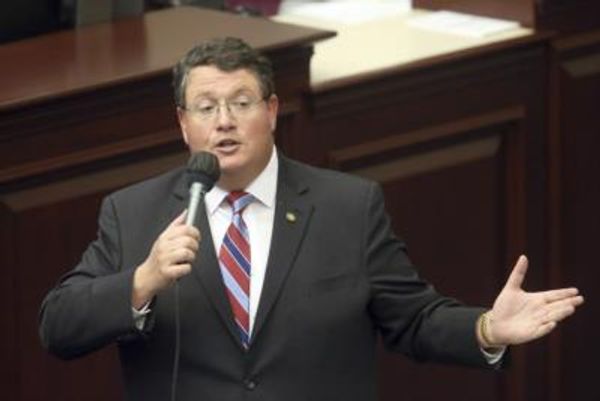By: David Luchs
Here’s what’s in store for you as you start your day:
- Seventy-seven measures certified for the ballot so far this year
- Candidate Connection update: Five races reached 100% completion in the past week
- What’s happening with recalls so far in 2022?
Let Ballotpedia be your political “pot of gold” this election season!
Top o’ the morning to you! Spring primaries have sprung, and we know it takes more than the luck of the Irish when casting your ballot.
Access to contextualized, neutral information is critical for voters to feel confident when heading into the voting booths…But Ballotpedia wouldn’t be able to be the lucky charm in their pockets without your support!
There is a vital need to ensure that Americans have access to a trustworthy and reliable source of information that explains complex issues in a way people can quickly understand and use. Whether it’s statewide ballot measures, getting to know your candidate, or local election information. To successfully accomplish this, we need your help building out our rainbow of information so people like you can navigate political complexities and get the facts they need.
Whether it’s $7 or $70, any amount donated to Ballotpedia ensures we can provide the accurate, neutral information voters need to feel as though they struck gold.
Five measures certified for statewide ballots last week
Seventy-seven statewide measures have been certified for the ballot in 31 states so far this year, one measure less than the average number certified at this point in other even-numbered years from 2010 to 2020.
Here’s an update on the latest ballot measure activity:
Five new legislatively referred measures were certified for the ballot last week:
- Alabama Broadband Internet Infrastructure Funding Amendment (2022)
- Florida Additional Homestead Property Tax Exemption for Certain Public Service Workers Amendment (2022)
- New Mexico Public Education Bond Issue (2022)
- New Mexico Public Libraries Bond Issue (2022)
- New Mexico Senior Citizens Facilities Bond Issue (2022)
Signatures have been submitted and are pending verification for one initiative in North Dakota:
Enough signatures were verified for five initiatives to certify them to state legislatures. If the legislature doesn’t enact them, proponents will either need to gather a second round of signatures in Massachusetts and Ohio or, in Alaska, the measure will be certified for the ballot:
- Alaska State Recognition of American Indian Tribes Initiative (2022)
- Massachusetts App-Based Drivers as Contractors and Labor Policies Initiative (2022)
- Massachusetts Changes to Alcohol Retail Licensing Initiative (2022)
- Massachusetts Medical Loss Ratios for Dental Insurance Plans Initiative (2022)
- Ohio Marijuana Legalization Initiative (2022)
From 2010 to 2020, the average number of statewide ballot measures certified in an even-numbered year was 164. By this time during even-numbered years from 2010 through 2020, an average of 78 statewide measures had been certified for the ballot.
Candidate Connection update: Five races reached 100% completion in the past week
Ballotpedia’s Candidate Connection survey asks candidates for federal, state, and local office to share what motivates them on a personal and political level. We’ll be providing regular updates on how many races have a 100% survey completion rate in Thursday editions of the Brew this year.
As of March 15, 2022, we’re tracking 18 races with final candidate lists and a 100% Candidate Connection completion rate. Five of those races reached 100% completion in the past week.
We use the term race to describe a primary, runoff, or general election for a single office or seat or for a single set of seats that are elected as a batch. For example, a school board general election for three at-large seats where each voter selects three candidates would be one race, while a school board general election for three seats elected by district where each voter is voting for one candidate would be three separate races.
Some other details about the five races that reached a 100% response rate last week:
- Three of the five races are in Texas, while one each is in North Carolina and Wisconsin.
- All five feature two candidates on the ballot.
- Three of the five are Democratic primary runoffs, one is a Democratic primary, and one is a general election.
- Two of the five are for the U.S. House.
And a look at all 18 races with a 100% response rate:
- As of this week, there are now five states with at least one race with a 100% response rate.
- Thirteen of the 18 races are taking place in Texas.
- Three of the 18 races are general elections.
- Of the 15 primaries and primary runoffs, nine are for the Democratic nomination and six are for the Republican nomination.
- Ten of the 18 are races for U.S. House.
One of this week’s new races with a 100% completion rate was the April 4 general election for District 24 on the Dane County Board of Supervisors in Wisconsin between incumbent Sarah Smith and Clint Keaveny. Here’s how the two answered the question, “What areas of public policy are you personally passionate about?”
Sarah Smith:
“Clean water, housing insecurity, and Dane County’s pandemic recovery are the top issues brought up by my constituents. In my first two years on the County Board, I’ve supported efforts to keep our lakes clean like requiring public information about PFAs and prohibiting the discharge of pollutants into our water. I also cosponsored a resolution to initiate legal action against companies that manufactured PFAs. To prevent homelessness, I’ve collaborated on solutions to provide housing navigation services and supported efforts to provide legal counsel for people facing evictions.
In a second term, I will defend clean water and support initiatives to prevent further contamination from PFAs and other pollutants. I will also continue my work to address housing insecurity and homelessness. Additionally, I will stand by public health experts as they make decisions to keep our community safe and help us recover from this pandemic.”
Clint Keaveny:
“Healthcare policy is my #1 passion – in a country as wealthy as the United States, no one should have to go without the treatment they need, or choose between paying rent and paying for their medicine. This is a policy area that’s difficult to address on the local level, but there are things that can be done. Regulating predatory ambulance billing practices and increasing the number of local mental health providers would be a great start.”
What’s happening with recalls so far in 2022?
So far in 2022, Ballotpedia has tracked 111 recall efforts against 185 officials. School board members saw the most recall efforts started against them in 2022, continuing a trend that started in 2021. Sixty-nine school board members have been included in recall efforts this year. City council members saw the second-most with 50, followed by county commissioners with 33. City council members drew the most recall petitions from 2016 to 2020.
Recall efforts against 58 officials have been related to COVID-19 or government responses to the pandemic in 2022, which accounts for 31.4% of officials included in recall efforts. In 2021, that percentage was 39.8% of officials, and it was 29.6% of officials in 2020.
Recall elections against 14 officials have been held so far this year. The recalls against six of those officials (43%) were approved by voters, removing them from office, while eight officials (57%) had their recalls rejected, keeping them in office. Recall elections against another 10 officials are scheduled to be held between March and June 2022.
In 2021, recall elections were held against 67 officials. Recalls against 25 officials (37%) were approved, while 42 (63%) had their recalls rejected, keeping them in office. In 2020, recall elections were held against 55 officials, with 35 (64%) being approved and 20 (36%) being rejected.
The 24 recall elections that have been held or scheduled for the first half of 2022 are higher than the 21 recall elections that were held between January and June 2021. In the first half of that year, nine officials were removed from office in recall elections, while 12 were retained. The first half of 2020 saw recall elections against 27 officials on the ballot. Thirteen of those officials were removed from office, and 14 kept their seats.
The following recall elections are scheduled to be held in March 2022:
- March 22: Yamhill County Commission, Oregon
- March 29: Regional School Unit 21, Maine







